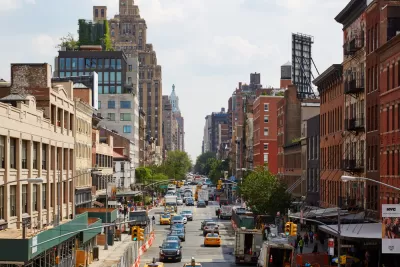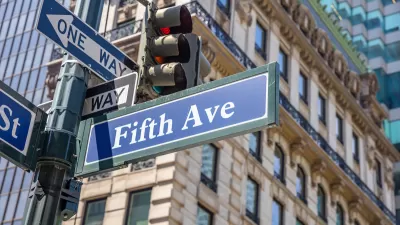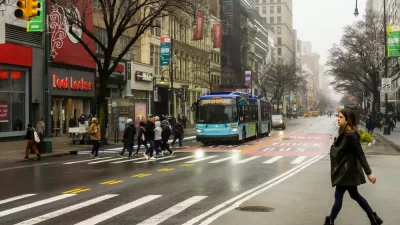A plan backed by New York City Mayor Eric Adams would repurpose 25 percent of the city’s street space for multimodal transportation and pedestrian plazas.

As reported by Micah Toll, a new plan from Transportation Alternatives known as NYC 25×25 would reclaim “the equivalent of 13 Central Parks worth of public space” from cars. “The proposal calls for 25% of NYC’s street space to be converted into walkable pedestrian plazas, bike lanes, green space, and bus lanes by 2025.”
According to the article, “With traffic-clogged streets moving at an average of 5 mph (8 km/h) in Midtown Manhattan, private automobile transportation in NYC is responsible for a significant portion of the city’s carbon emissions, air pollution, and urban grime.” And despite the fact that the majority of New Yorkers don’t own a car, “NYC currently has around 3 million free parking spots lining its streets, which is more than the number of cars registered in the city.” As Toll writes, “Repurposing street space would help to both clean the city and better serve its residents.”
The article notes that “Transportation Alternatives’ plan for NYC would see the creation of 500 miles (800 km) of dedicated bus lanes, another 500 miles of protected bike lanes, new secure garbage containers to prevent the piling of garbage mounds on sidewalks, and widespread community use of car-free roads.”
FULL STORY: NYC wants to take 25% of its street space away from cars in favor of a walkable/bikeable city

Manufactured Crisis: Losing the Nation’s Largest Source of Unsubsidized Affordable Housing
Manufactured housing communities have long been an affordable housing option for millions of people living in the U.S., but that affordability is disappearing rapidly. How did we get here?

Americans May Be Stuck — But Why?
Americans are moving a lot less than they once did, and that is a problem. While Yoni Applebaum, in his highly-publicized article Stuck, gets the reasons badly wrong, it's still important to ask: why are we moving so much less than before?

Using Old Oil and Gas Wells for Green Energy Storage
Penn State researchers have found that repurposing abandoned oil and gas wells for geothermal-assisted compressed-air energy storage can boost efficiency, reduce environmental risks, and support clean energy and job transitions.

Minneapolis Bans Rent-Setting Software
Four cities have enacted restrictions on algorithmic software that can inflate rent costs.

Oakland to Add 244 New EV Chargers
Oakland plans to launch its new charging network at eight locations by the end of 2025.

Jane Goodall Inspires with Message of Hope, Resilience, and Environmental Action
Speaking in Pasadena, Jane Goodall offered a hopeful and inspirational message, urging global compassion, environmental responsibility, and the power of individual action to shape a better future.
Urban Design for Planners 1: Software Tools
This six-course series explores essential urban design concepts using open source software and equips planners with the tools they need to participate fully in the urban design process.
Planning for Universal Design
Learn the tools for implementing Universal Design in planning regulations.
Heyer Gruel & Associates PA
City of Moreno Valley
Institute for Housing and Urban Development Studies (IHS)
City of Grandview
Harvard GSD Executive Education
Salt Lake City
NYU Wagner Graduate School of Public Service
City of Cambridge, Maryland





























